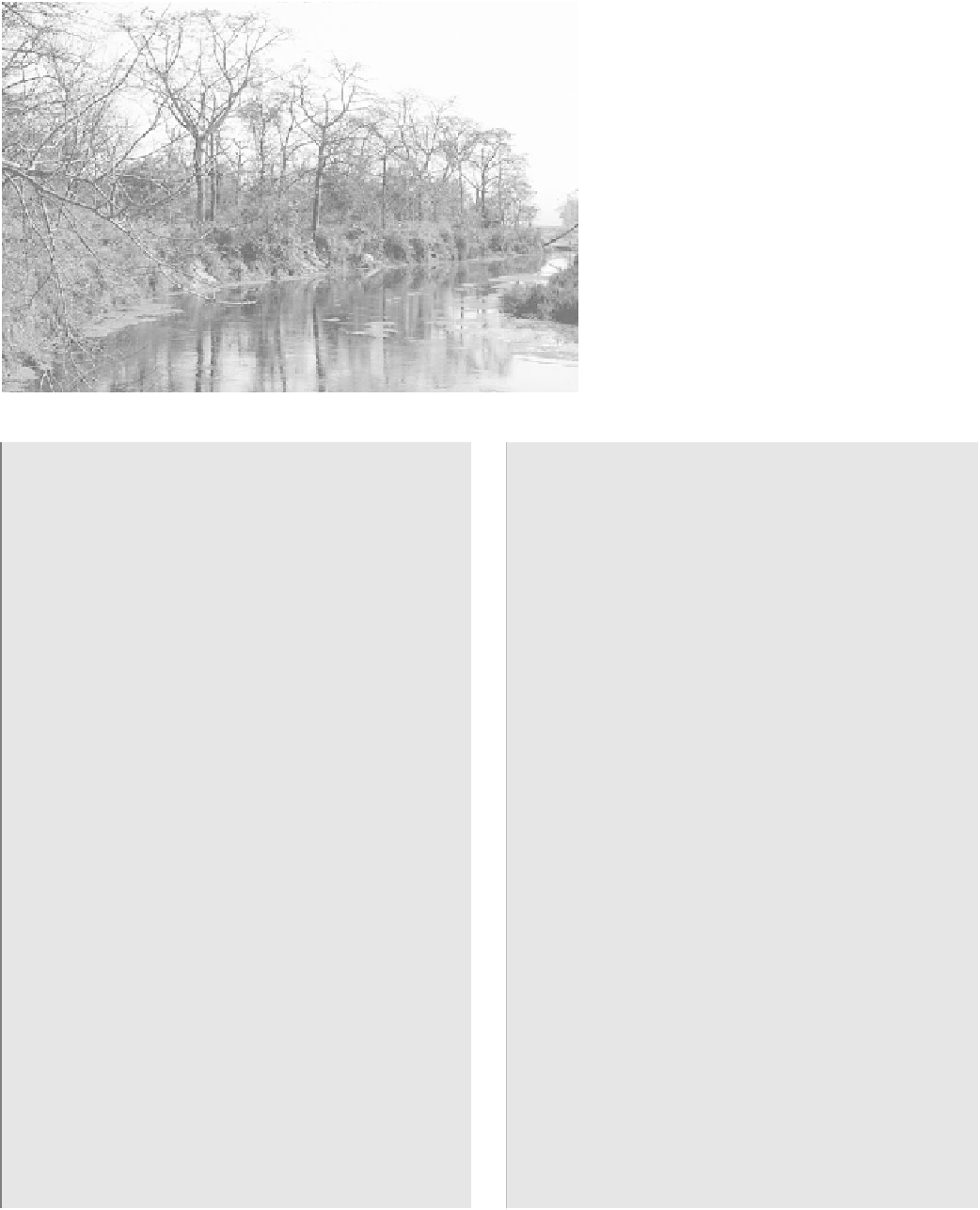Geography Reference
In-Depth Information
Figure 2-13
This monsoon forest lines the Rapti River in south-
ern Nepal. It is winter , dry season, and many of the
trees have lost all or at least some of their leaves to
compensate for the water shortage. Most of these
trees are semi-deciduous. The Rapti is part of the
Ganges River system and consequently is a sacred
river .
Photograph courtesy of B. A. Weightman.
tropical forests have been destroyed. Foresters seek
certain types of trees to cut for local use and export. I
will describe two of these here:
teak
(
tectona grandis
)
and
meranti
(
shorea spp
).
T Teak is regarded as a fine, medium-weight
hardwood. It is noted for its strength, stability , and
durability . T Termite resistant, it is valued for con-
structing housing and furniture. It used to be in
great demand for ships and is still used in the con-
struction of yachts. T Teak is native to India, Vietnam,
Burma, and Thailand, but is grown commercially
on Java and in Sri Lanka. Logging for export has
devastated teak forests in Myanmar and teak forests
have already been eliminated from Thailand.
There are several species of
meranti
, an equato-
rial forest wood that is called
seraya
in Malaysia.
These are giant, buttressed trees achieving heights
of over 200 feet (61 m). Meranti are among the
most important export woods of Asia. Logs are sent
to Australia, Europe, and Japan for use in construc-
tion and in the manufacture of plywood.
Rattans and fibers are also in demand. Used for
furniture, matting, and basketry , these are collected
and assembled for local use and export. Some of the
commercial rattans are climbing palms that wind
their way around the forest for lengths of 250 feet
(76 m) and more. Rattans have been known to
grow to 600 feet (183 m). The main suppliers are
the Malay Peninsula, Indonesia, and China. Kapok,
a waterproof fiber harvested from ripe tree pods,
and coconut fiber called coi
r
, serve multiple uses.
Bamboo
is among the oldest materials used
by humanity . Seeds and shoots are edible, as are
the worms that live inside (Figure 2-14). Water
pipes, containers, spears, house frames, and con-
struction scaffolding are only some of its uses.
Bamboo is a grass related to corn and wheat.
There are at least 1,400 species of the grass, and
it grows around the world in most environments.
However, commercial species are tropical, and
60 percent of these are in Asia.
A woody perennial, it can grow to 60 feet (18 m).
Some fast-growing varieties can grow a foot in one
day .
Moso
bamboo, commonly cultivated in China,
is the fastest growing plant on Earth. This variety
can shoot up as much as three feet in a single day
and reaches heights of 75 feet (23 m).
While bamboo has long had a variety of uses
in Asia, today , industrialized countries have
found many new uses for it. Bamboo flooring is
growing in popularity and it is even being used
for basketball courts. Kitchen cabinets, furniture,
elegant boxes, computer cases, skateboards, and
clothing among other products are being made
from bamboo.
Bamboo cultivation has boomed in Asia over
the past two decades, especially in China. Chinese
bamboo generally grows on small, family-owned
plots. Some of these plots have been farmed for
centuries. For a number of years, Chinese farmers
cleared swaths of natural forest in order to grow
their ever-more profitable bamboo. Fortunately ,


















Search WWH ::

Custom Search